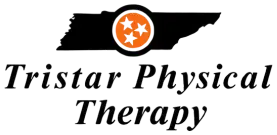Dry needling and acupuncture are two techniques that use thin needles to stimulate specific points on the body. Despite the similarities in their approach, there are some significant differences between the two practices. This article aims to unpack these differences and similarities to help you understand which technique may be right for you.
Sticking It to the Myths: Unpacking Dry Needling and Acupuncture
Dry needling is a technique that involves inserting a needle into a muscle or soft tissue trigger point. The goal is to reduce pain and restore function by releasing tension in the affected area. Many people confuse dry needling with acupuncture, but the two practices are quite different. Dry needling is based on anatomical and neurophysiological principles, whereas acupuncture is rooted in traditional Chinese medicine.
Acupuncture is a technique that involves inserting needles into specific points along the body’s energy pathways, known as meridians. This technique aims to restore balance and flow to the body’s energy, or chi. Acupuncture is often used to treat chronic pain, headaches, and even fertility issues. Unlike dry needling, acupuncture has been used for thousands of years and is a fundamental part of traditional Chinese medicine.
Needles at the Ready: Exploring the Distinctions and Connections Between Dry Needling and Acupuncture
While dry needling and acupuncture share some similarities, there are a few key differences between the two techniques. Acupuncture needles are usually inserted into the skin at a shallower depth than dry needling needles. Additionally, acupuncture needles may be left in place for up to 30 minutes, while dry needling needles are usually removed within a few minutes.
Another significant difference between the two techniques is the number of needles used. Acupuncture often uses several needles at once, while dry needling typically uses only one needle at a time. Additionally, acupuncture needles are often manipulated to produce a sensation known as deqi, which is believed to indicate the proper placement of the needle.
Despite their differences, there are also some similarities between dry needling and acupuncture. Both techniques use thin, sterile needles to stimulate specific points on the body. Both also aim to alleviate pain and restore function by releasing tension and promoting healing. Additionally, both techniques are generally considered safe and have few side effects.
While dry needling and acupuncture share some similarities, they are distinct techniques that are rooted in different philosophies and practices. Depending on your needs and preferences, one technique may be more effective for you than the other. It is always best to consult with a qualified practitioner to determine the best course of treatment for your specific condition. With proper care and attention, both dry needling and acupuncture can be valuable tools for promoting health and wellness.

